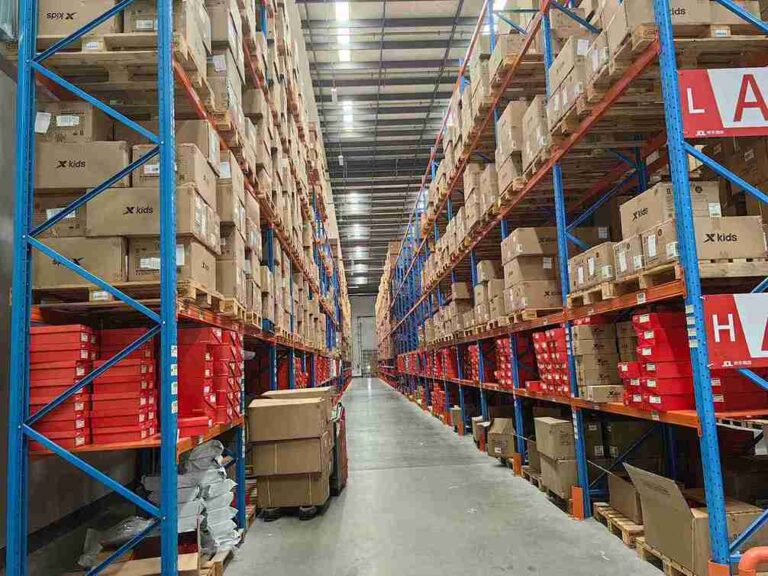📐 "First 50 Enterprise Queries Get Custom 3D Warehouse Design" Plan
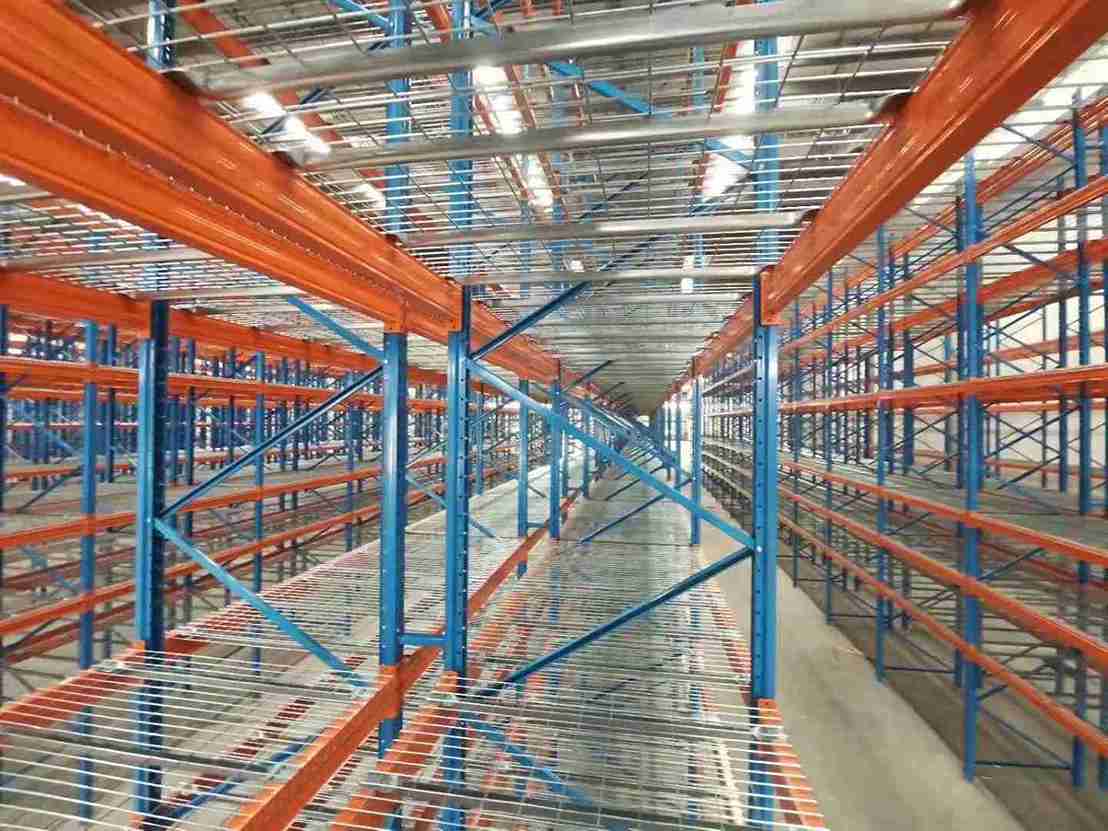
Beyond 200%: A Strategic Blueprint for Maximizing ROI with Custom Automated Industrial Racking Systems
For decision-makers in logistics, distribution, and manufacturing, the compelling promise of “boosting efficiency by 200%” often serves as a powerful initial trigger. However, industry leaders understand that such transformative figures are not achieved by simply replacing old shelving. Genuine, sustainable efficiency gains are the product of a holistic, strategic overhaul, where sophisticated automated industrial racking systems form the core of a completely re-engineered operational ecosystem.
This comprehensive guide delves beyond the marketing headline to provide a detailed, actionable blueprint for businesses seeking to not only achieve but consistently exceed ambitious performance metrics. The focus is on ensuring that an investment in automated industrial racking systems delivers unparalleled operational and financial returns, solidifying a company’s competitive edge in an increasingly demanding global market.
The path to 200% efficiency is a strategic journey, not a simple purchase. It demands a meticulous synergy of structural engineering, intelligent software, and optimized process flow. This article will explore the critical, interconnected components of a successful automation project. It will cover the foundational importance of the initial data audit, the strategic selection of specific automated industrial racking systems technologies—such as pallet shuttle systems and Automated Storage and Retrieval Systems (AS/RS)—and the seamless integration of mobility solutions like AGVs (Automated Guided Vehicles) and unmanned forklifts.
The objective is to arm readers with the profound industry knowledge required to not just procure a system, but to champion a strategic investment that future-proofs logistics operations, dramatically reduces operational expenditures, and creates a formidable market advantage.
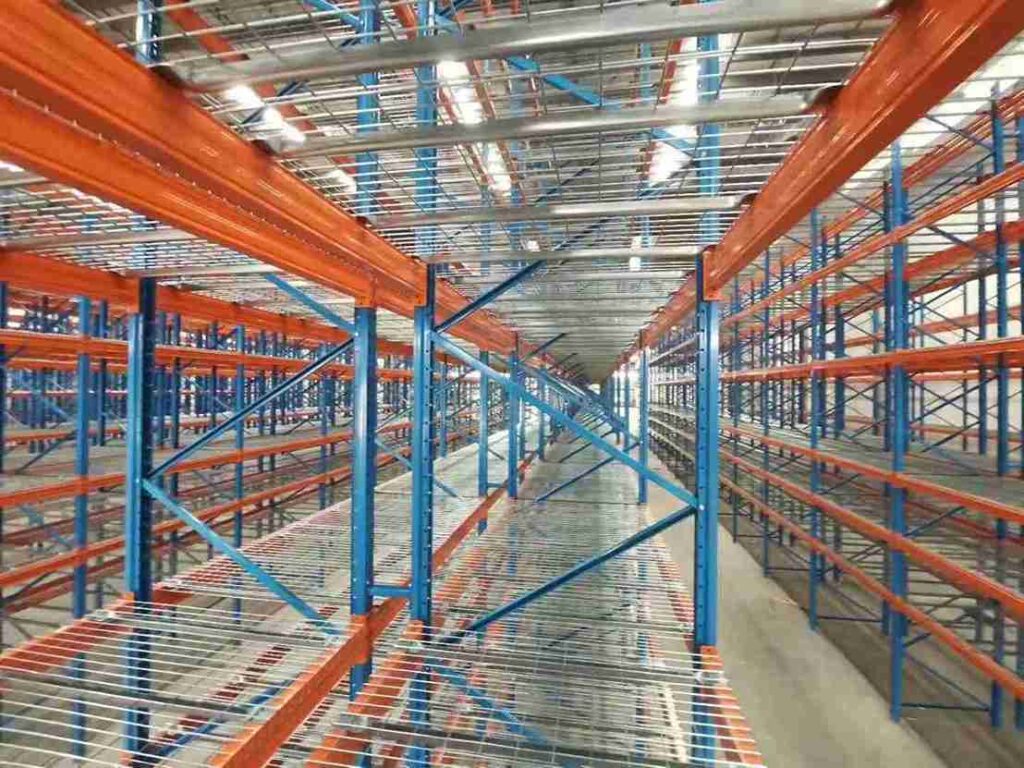
The Foundational Bedrock: Deconstructing Modern Automated Industrial Racking Systems
At its core, an automated industrial racking system represents the fundamental skeleton of any intelligent warehouse. Far surpassing the capabilities of traditional static shelving, these advanced structures are precision-engineered for dynamic, high-speed interaction with automated equipment. They are designed and built to endure the relentless, 24/7 operational demands of a modern fulfillment or production supply center. The integrity and design of these automated industrial racking systems are paramount, as they directly support and enable the entire ecosystem of automation.
The Critical Imperative of Customization in Automated Industrial Racking Systems
In the realm of warehouse automation, the term “custom” transcends a mere marketing buzzword; it is the absolute non-negotiable cornerstone of achieving peak performance and a strong return on investment. Every logistics operation possesses a unique fingerprint, defined by a distinct SKU profile, fluctuating order volumes, pronounced seasonality peaks, and specific facility dimensions. Deploying a generic, off-the-shelf automated industrial racking system inevitably introduces operational compromises that systematically erode efficiency gains from the outset. Leading providers, therefore, design their automated industrial racking systems from the ground up, based on a deep and forensic analysis of a client’s specific operational data. This rigorous approach to customization ensures:
Precision-Optimized Dimensions: Every component, from beam levels and rack heights to aisle widths, is computationally calculated to maximize cubic space utilization while guaranteeing flawless clearances for AGVs and robotic forklifts. This precision eliminates wasted space and prevents operational bottlenecks.
Load-Bearing Specificity: The structural integrity of the automated industrial racking systems is meticulously calibrated for the client’s exact unit loads. This engineering accounts for weight, dimensions, and, crucially, the dynamic forces exerted by high-speed storage and retrieval machines. This focus is not solely on safety; it is a fundamental requirement for ensuring the system’s long-term longevity and consistent performance under continuous stress.
Holistic Flow Integration: The racking is never conceived as an isolated island. It is designed as an integral component of the material flow, featuring built-in pathways for integrated automated conveyor systems and strategically placed staging areas for automated sorting systems. This holistic view transforms the automated industrial racking systems into a dynamic participant in the workflow.
Core Technologies Defining Advanced Automated Industrial Racking Systems
The technological landscape of modern warehouses is defined by several types of automated industrial racking systems, each engineered for specific operational objectives. Selecting the appropriate technology is a strategic decision with long-term implications.
Unit-Load AS/RS (Automated Storage and Retrieval Systems): These systems represent the pinnacle of storage density, speed, and accuracy. Comprising towering structures served by aisle-dedicated cranes, they store and retrieve pallets with unparalleled precision. Unit-Load AS/RS are the ideal solution for high-volume, high-SKU-count environments where physical space is a premium constraint and inventory turnover is rapid. The sophisticated Warehouse Management Software (WMS) controlling an AS/RS provides real-time, bin-accurate inventory control, making these automated industrial racking systems a cornerstone of data-driven logistics.
Pallet Shuttle Systems:This technology offers a revolutionary approach to high-density, high-throughput pallet storage within automated industrial racking systems. A battery-powered shuttle device operates inside the racking lanes, autonomously moving pallets deep into storage positions. This enables ultra-deep storage configurations, often requiring only a single aisle for a forklift or AGV to interface with the shuttle. These particular automated industrial racking systems dramatically increase storage density compared to traditional selective pallet racking and are perfectly suited for both FIFO (First-In, First-Out) and LIFO (Last-In, First-Out) inventory management policies.
Automated Carton Flow Systems: For case picking and e-commerce fulfillment operations, these automated industrial racking systems leverage gravity and roller technology to automatically bring cartons from the rear of the rack to the pick face. This mechanism is a proven game-changer for drastically reducing picker travel time and ensuring perfect stock rotation. By creating an efficient “goods-to-person” environment, these automated industrial racking systems can reliably boost picking productivity by well over 200%, making them a critical component in omni-channel distribution centers.
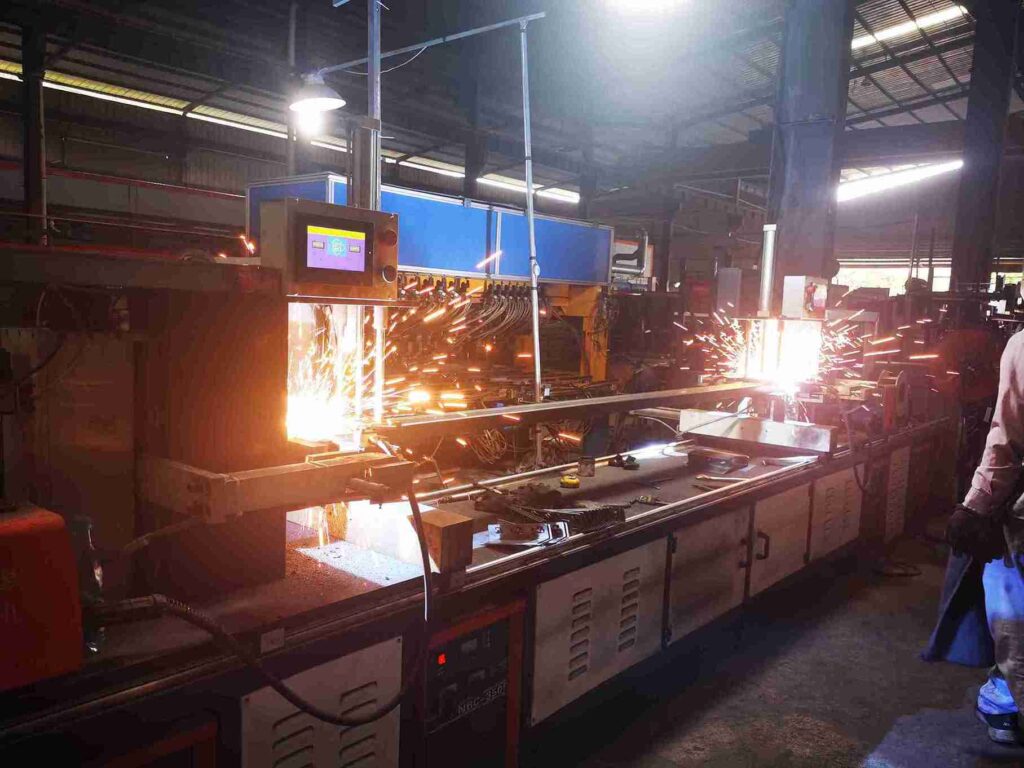
The Intelligent Core: Warehouse Management Software as the Central Nervous System
The most robust and physically impressive automated industrial racking systems remain inert and unproductive without their digital brain. The Warehouse Management System (WMS) and the Warehouse Control System (WCS) are the technologies that transform steel, aluminum, and electronics into an intelligent, responsive, and self-optimizing organism. The WMS functions as the strategic brain, managing high-level functions including inventory data, order management, and labor planning.
The WCS acts as the central nervous system, providing real-time directives to the automated equipment—instructing the AS/RS crane on which specific pallet to retrieve, directing the AGV to its next destination, and managing the sortation logic of conveyor systems. The seamless, bi-directional integration between these software platforms and the physical automated industrial racking systems is what unlocks the profound efficiency gains promised by automation:
Dynamic Slotting Optimization: The WMS continuously analyzes SKU velocity and affinity patterns, automatically and dynamically reassigning fast-moving items to the most accessible locations within the automated industrial racking systems. This intelligent slotting minimizes travel time for both automated equipment and any remaining manual operators.
Intelligent Order Consolidation and Wave Planning: The system intelligently groups incoming orders to optimize the picking paths for automated equipment and robots. This sophisticated logic reduces empty travel and ensures that all items for a single order or shipment arrive at the packing station in perfect synchrony, streamlining the outbound process.
Real-Time System Health and Performance Monitoring: Advanced control towers provide a live, holistic dashboard of the entire operation. This system proactively monitors the health of the automated industrial racking systems and their associated equipment, predicting maintenance needs for components like shuttle motors or crane drives before a failure can occur, thereby avoiding costly and disruptive unplanned downtime.
Orchestrating Movement: The Integration of Robotics with Automated Industrial Racking Systems
The true manifestation of “automation” occurs in the spaces between and within the automated industrial racking systems. This is the domain of the robotic workforce, which brings fluid movement to the fixed structure.
AGVs (Automated Guided Vehicles): These tireless, precise material transporters are the lifeblood of horizontal movement in a automated facility. They are ideally suited for repetitive, point-to-point transportation of pallets, carts, or bins. In a seamlessly integrated system, AGVs ferry goods from receiving docks to the input points of the AS/RS, or transport picked orders from the automated industrial racking systems to the shipping staging area, operating consistently across multiple shifts without fatigue.
Unmanned Forklifts (Automated Guided Forklifts): These robots bring the versatility and vertical capability of a traditional forklift into the automated paradigm. They can perform complex tasks such as pallet stacking, retrieving loads from various levels of the automated industrial racking systems, and even loading outbound trucks, all while operating in harmony with the central WCS for task assignment and traffic management.
The powerful synergy between the fixed automated industrial racking systems and these mobile robotic agents creates a fluid, highly adaptable, and resilient operational environment. This ecosystem can be rapidly reconfigured and optimized through software updates as business needs, order profiles, and market demands evolve, ensuring long-term adaptability.
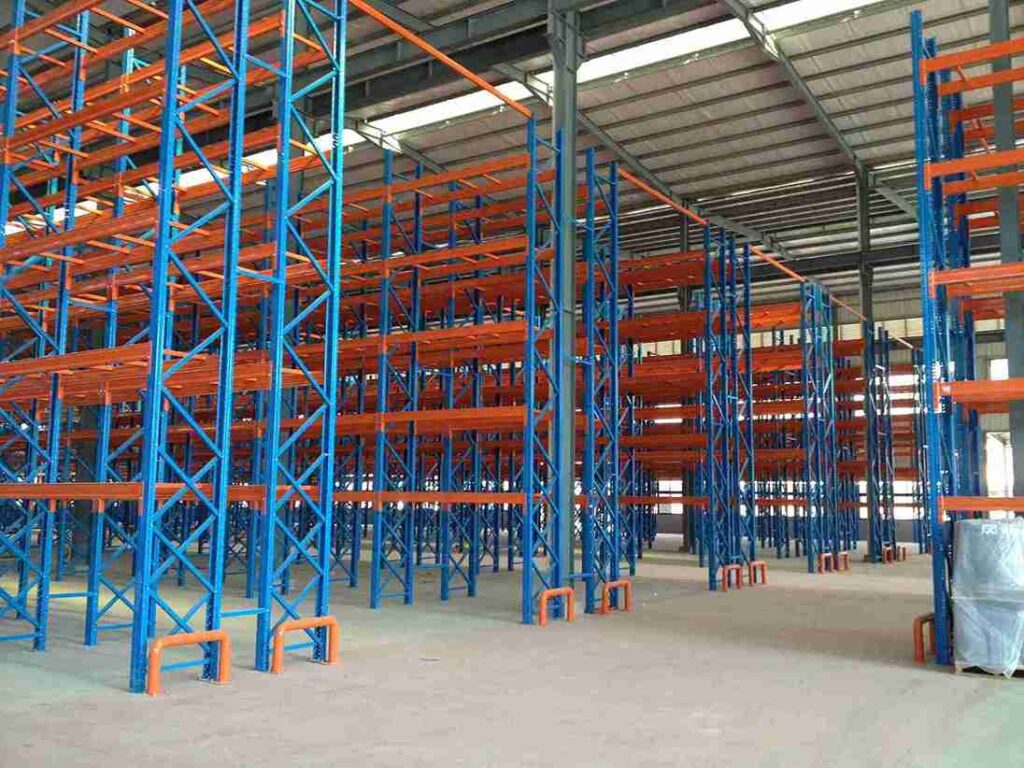
The Strategic Roadmap to 200%: A Phased and Disciplined Implementation
Achieving monumental and sustainable efficiency gains is a strategic marathon, not a simple sprint. A disciplined, phased methodology is critical for managing risk, validating the return on investment at each stage, and securing continuous internal stakeholder buy-in throughout the organizational journey.
Phase 1: The Deep-Dive Data Discovery and Granular ROI Modeling
This initial phase is the most critical determinant of long-term success, and it is where a comprehensive “ROI Analysis” demonstrates its immense strategic value. Reputable providers do not merely submit a quotation; they collaboratively build a detailed financial and operational model based on empirical data.
Comprehensive Process Mapping & Data Mining: Specialists work intimately with the client’s team to map every single touchpoint and decision point in the existing workflow. They then conduct a deep analysis of historical data, typically spanning 3 to 6 months, including SKU master files, detailed order histories, receiving and shipping logs, and granular labor performance reports.
Advanced 3D Simulation Modeling: Utilizing powerful discrete-event simulation software, engineers create a “digital twin” of the proposed automated warehouse, incorporating the designed automated industrial racking systems. This digital model is then stress-tested using the client’s actual historical data, running through various demand scenarios and operational strategies. This simulation provides a data-backed, defensible projection of the new system’s throughput capacity, exact labor hour reductions, and measurable accuracy improvements. It is the scientific foundation that validates performance claims.
Transparent and Detailed Financial Projection: The final output of this phase is a clear, comprehensive ROI analysis. This document details projected savings across multiple vectors: direct labor reduction, decreased product damage, lower energy consumption (through optimized lighting in human-free zones), and the revenue impact of increased throughput capacity. All associated costs, from civil works and IT infrastructure to ongoing software support and preventative maintenance, are accounted for to provide a complete financial picture.
Phase 2: Co-Engineering the Solution and Meticulous Project Planning
With a validated financial and operational model, the project moves into the detailed engineering stage. Experienced project managers work in a true partnership with the client’s team to create a meticulous, minute-by-minute implementation plan. This plan includes definitive timelines, clear milestones, and robust communication protocols. A key focus is planning the physical installation of the automated industrial racking systems and associated technologies to cause minimal disruption to the client’s ongoing operations, often employing a phased implementation strategy or scheduling intensive work during nights and weekends.
Phase 3: Precision Installation, Systems Integration, and Rigorous Testing
Certified installation teams execute the engineered plan with a focus on precision and safety. The physical installation of the automated industrial racking systems is carefully synchronized with the work of electrical and network infrastructure teams. Once the hardware is securely in place, the most delicate phase begins: systems integration. Engineers and software specialists conduct thousands of test cycles to ensure flawless communication between every component—from the enterprise-level WMS down to a single optical sensor on a pallet shuttle within the automated industrial racking systems.
Phase 4: Managed Go-Live and Continuous Optimization Support
The go-live event is not the terminus of the partnership; it is the commencement of a new phase of operational excellence. Specialists remain on-site to ensure a smooth and stable transition. They provide comprehensive, role-based training for the client’s staff, effectively transitioning their roles from manual laborers to system supervisors, data analysts, and exception handlers. Furthermore, leading providers offer continuous optimization services, where they periodically review the performance data of the automated industrial racking systems and recommend software tweaks or minor physical adjustments to extract incremental efficiency gains as the client’s business continues to grow and evolve.
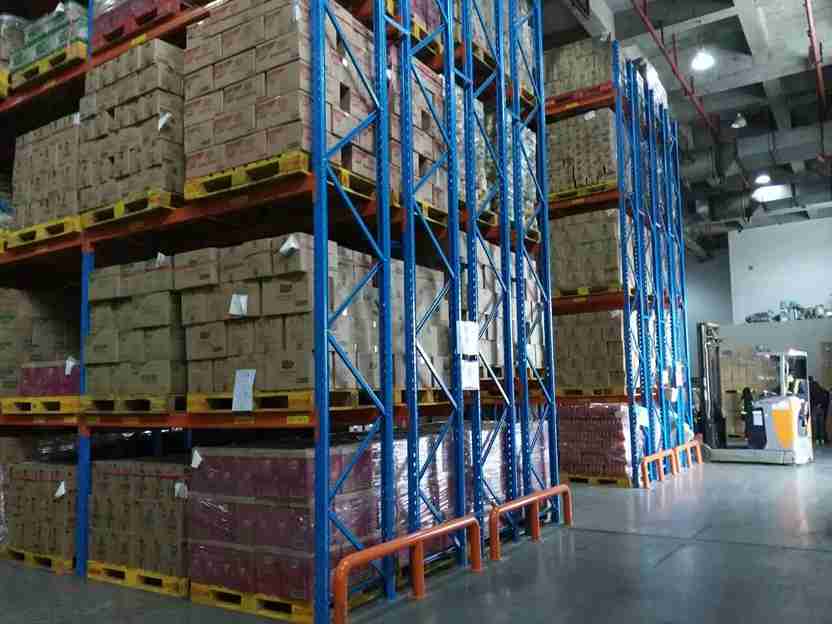
Case in Point: Transforming a 3PL’s Regional Hub with Automated Industrial Racking Systems
A concrete illustration involves a project with a third-party logistics (3PL) provider in Southeast Asia. The company was facing a severe 120% capacity crunch with no possibility of expanding its physical footprint. Its manual operations were plagued by a 1.8% picking error rate and rapidly escalating labor costs and challenges.
The Integrated Solution Implemented:
A high-bay AS/RS for pallet storage, which increased storage density by over 300% within the same footprint.
A high-throughput pallet shuttle system integrated within the automated industrial racking systems for their fast-moving beverage clients, enabling flawless FIFO-compliant operations.
A fleet of unmanned forklifts for autonomously transporting pallets from the AS/RS to the value-added services (VAS) area.
A fully integrated, proprietary WMS/WCS platform to orchestrate the entire ecosystem of automated industrial racking systems and robots.
The Quantifiable Results (After 6 Months of Operation):
Throughput Efficiency: Increased order processing capacity by 240%, easily handling peak-season volumes.
Labor Productivity: Reduced direct labor hours by 65% in the storage and retrieval functions, reallocating staff to higher-value tasks.
Operational Accuracy: Achieved a remarkable 99.99% inventory and order accuracy rate, virtually eliminating shipping errors and associated costs.
Return on Investment: The entire project, centered on the advanced automated industrial racking systems, achieved a full return on investment in under 22 months, driven by dramatic labor savings and the new ability to onboard lucrative clients without any physical expansion.
Conclusion: Forging Unassailable Competitive Advantage with Intelligent Automation
The journey to 200% warehouse efficiency is a tangible and achievable strategic objective, but it demands a perspective that looks far beyond a simple transaction for equipment. It necessitates a deep, collaborative partnership with an expert provider who can visualize and engineer the entire ecosystem—the steel of the automated industrial racking systems, the intelligence of the software, the mobility of the robots, and the flow of the processes—as a single, unified, and intelligent solution. Investing in custom automated industrial racking systems is the foundational step that enables this total transformation, creating a logistics operation that is not merely faster, but fundamentally smarter, more resilient, and inherently scalable.
In today’s hyper-competitive global market, where supply chain agility, speed, and accuracy are the ultimate currencies, such an strategic investment has transitioned from a luxury to a core component of modern business strategy. It builds a formidable operational moat that competitors cannot easily cross, ensuring market leadership and profitability for the long term. Companies that proactively embrace this transformation, positioning advanced automated industrial racking systems at the heart of their logistics strategy, are the ones that will define the future of their industries.
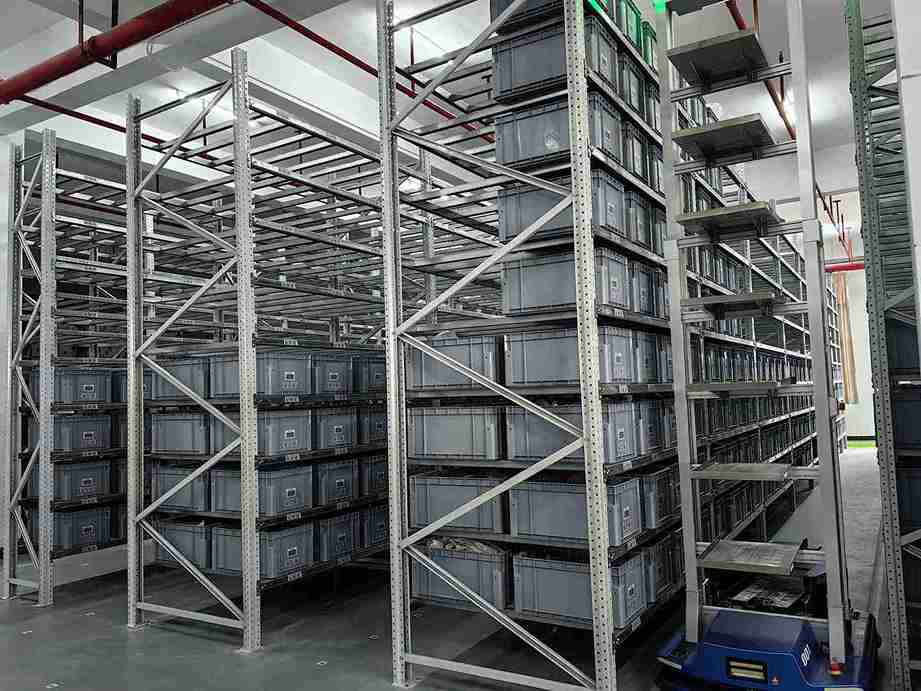
Frequently Asked Questions (FAQs)
1. How does the maintenance and upkeep of an automated racking system compare to traditional shelving?
Advanced automated industrial racking systems necessitate a different, more proactive maintenance philosophy compared to traditional static shelving. While traditional racking may require only occasional visual inspections, automated industrial racking systems benefit immensely from a scheduled, predictive maintenance regimen. These modern systems are equipped with thousands of sensors that continuously feed performance data into a central monitoring platform.
This allows technical teams to predict component wear—such as motor brush degradation or sensor misalignment—and schedule maintenance during planned downtime periods. This represents a strategic shift from reactive fixing to proactive management, ultimately resulting in higher overall system uptime and greater operational predictability than manual systems, which are often prone to unplanned disruptions due to human-error-driven damage.
2. What happens if our business needs change or we experience sudden, rapid growth? Is the system scalable?
Inherent scalability is a primary design criterion for any high-quality automated industrial racking systems project. A well-engineered custom solution is fundamentally modular by nature. Reputable providers design with future expansion as a core consideration. For vertical growth, the structural uprights of the automated industrial racking systems can often be safely extended. For horizontal expansion, additional racking bays, modules, and even entire new aisles can be integrated into the existing layout.
The controlling software is typically licensed with the capacity to handle significantly increased transaction volumes, and additional AGVs or shuttle carts can be added to the robotic fleet as throughput demands increase. A professional initial ROI analysis will always include defined scalability scenarios to inform sound long-term capital planning.
3. We have a mix of pallets, boxes, and odd-sized items. Can one system handle such diverse product types?
Absolutely. Handling diverse product profiles is a common challenge and a key strength of a truly integrated, multi-modal automated industrial racking systems solution. Engineers design these systems to accommodate varied SKUs simultaneously. This might involve a Unit-Load AS/RS for full pallets, an automated carton flow system for case picking, and a designated zone within the broader automated industrial racking systems framework—such as static shelving or a mini-load AS/RS—for smaller, non-conveyable items.
The unified WMS/WCS acts as the overarching intelligence, seamlessly directing the different automated equipment (AGVs, conveyors, sorters) to handle each SKU type according to its specific storage, picking, and handling rules within the cohesive structure of the automated industrial racking systems.
4. How resilient is the system to power outages or network failures?
Engineering for resilience and business continuity is a critical aspect of designing robust automated industrial racking systems. Critical components, such as the servers hosting the WCS/WMS, are typically housed in a secure, UPS (Uninterruptible Power Supply) protected environment. The systems themselves are designed with multiple fail-safes; for instance, pallet shuttles have onboard batteries and can be manually retrieved if needed.
AGVs can be programmed to return to their charging stations during a power dip to ensure they are operational when power resumes. Furthermore, the system architecture often includes redundant network paths and the capability to operate in a degraded, manual-override mode, ensuring that a single point of failure does not catastrophically halt the entire operation.
5. What is the typical lifespan of an automated racking system, and what about technology obsolescence?
The physical racking structure of automated industrial racking systems has an exceptionally long lifespan, often exceeding 25 years with proper, scheduled maintenance. The technological components—the software, programmable logic controllers (PLCs), and robotic drives—have a shorter refresh cycle, typically around 7-10 years, in line with the pace of digital innovation. Forward-thinking providers design their automated industrial racking systems with this divergence in mind.
They employ open-architecture standards for software to ensure that future upgrades and platform migrations are feasible without requiring a “rip-and-replace” of the entire system. The hardware is also highly modular, allowing for the “brains” (control systems) of an AGV or shuttle to be upgraded while retaining the robust mechanical chassis and drives, thereby strategically protecting the client’s long-term capital investment from the threat of rapid technological obsolescence.
If you require perfect CAD drawings and quotes for warehouse racking, please contact us. We can provide you with free warehouse racking planning and design services and quotes. Our email address is: jili@geelyracks.com

